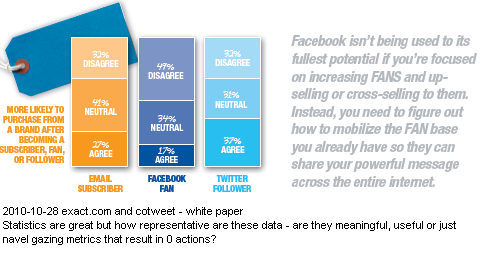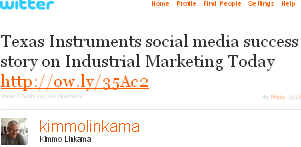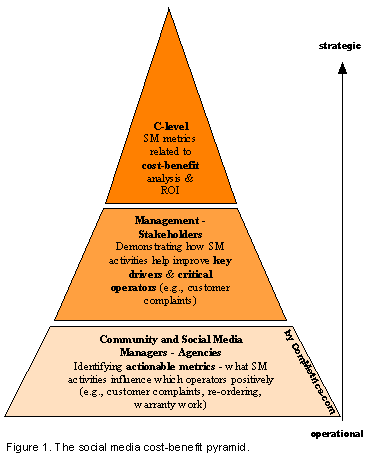The My.ComMetrics 2011 trend briefing series, consisting of 25 blog posts and 7 webinars about trends to watch and social media monitoring DOs and DON’Ts, has addressed some of the pitfalls we need to watch out for in 2011, including:
- – 2011 trends: Mobile communication and ROI (return on investment),
– 2011 trends: Web lovers and privacy
– 2011 trends: Social networking and ROI, and
– 2011 trends: Risk management and social media ROI
One school of thought is to measure everything. While this may work in direct marketing, we have previously addressed why this may fail when it comes to mastering social media measurement challenges.

When you start putting together your social media activities, you have to take a realistic look at your costs and the benefits that will be forthcoming if you do it right. We present the social media cost-benefit pyramid that helps you show the ROI your bosses want to see.
- Article source – 2011 trends: The social media cost-benefit pyramid
Sign up with your email to get our next post first; you’ll be glad you did.
- 1. You have to find your own way to success
 Many companies are still experimenting with social media, but their experiences may not be very useful for you. Accordingly, just because Industrial Marketing thinks it is the coolest thing does not mean that Texas Instruments’ approach to client communities makes sense for your firm.
Many companies are still experimenting with social media, but their experiences may not be very useful for you. Accordingly, just because Industrial Marketing thinks it is the coolest thing does not mean that Texas Instruments’ approach to client communities makes sense for your firm.
Tip 1: Becoming social media savvy and leveraging it effectively for the company requires a lot of practice. Many small and frequent steps are a great beginning.
- 2. Navel-gazing metrics are useless
Often we conclude that if you cannot measure it, do not try to do it. This is the direct marketer method and there’s no doubt it can work. But often, it fails:
Another silly way to measure the value of your webpage or blog is by using some idiosyncratic things to determine its value:
- – ComMetrics.com has been valued at US$4087 per customer
– ComMetrics.com is getting 3522 pageviews per day and making US$12.57 daily
– ComMetrics.com Estimated Worth US$9176.10 by website outlook
Since the above fails to help me figure out how I could improve things, it is of little use to me. What is your take?
Tip 2: All things being equal, more traffic is a good thing since it means more exposure for your brand. It also helps fighting off the out of sight out of mind syndrome. Nevertheless, if all this new traffic does not result in more sales or help improve key metrics top management cares about, what is it good for?
- Alert – Our 2011 trendwatch webinar: More useless social media measures on Thursday 2011-01-26 further addresses these issues.
- If you missed it, click on the link to watch the videos, listen to the podcast and view the slides – you will be surprised.
- 3. Strategic versus social media analytics and engagement metrics
This social media cost-benefit pyramid shows how following through from operational to strategic parameters ensures top management’s buy-in.
 Management and shareholders are most concerned about operators from social media, such as using Twitter, and do strategic monitoring to find out how they affect key drivers that impact sales and more revenue.
Management and shareholders are most concerned about operators from social media, such as using Twitter, and do strategic monitoring to find out how they affect key drivers that impact sales and more revenue.
Mid-level managers focus on getting social media analytics, such as how many regulars act on a tweet we publish about today’s special and a discount coupon for lunch (e.g., number using the coupon, number of re-tweets).
Community managers and agencies focus on analyzing engagement data to learn how social media might influence the information that interests management. This group of managers wants to find out if sending a tweet at 10:45 gets a better response than sending at 10:15 and so forth.
Other examples include how well a 10 percent discount with a deadline works versus just offering a free soft drink, or how using Twitter or a Facebook fanpage compared to other social media efforts drives customer traffic to a brick-and-mortar store.
By contrast, top management focuses on strategic issues: one or two key operating metrics and how these relate to ROI. This means tweeting must be linked to how it alters measures that your executive care about. An example might be how participating in a community like Quora helps reduce calls to the customer hotline.
- We also discuss this in an upcoming blog post:
Why the boss thinks 125,000 monthly pageviews mean failure – 2011-01-27
- Bottom line and take-aways
Addressing the above issues using the KISS principle (keep it simple, stupid) enables management to get a better handle on social media activities and how they can help reach strategic targets.
More Resources
I would love to hear how you have used this framework in your measurement efforts. I hope you will join the discussion in the comments below. Please share this with your organization, partners and staff!
Pingback: 2011 trends: Social media best practice and ROI - trendwatch, social media monitoring, social media marketing, best practice, Twitter monitoring, benchmark test, Facebook strategy, customer engagement - CyTRAP Labs provides customised social media monitor
Pingback: Urs E. Gattiker
Pingback: MyComMetrics
Pingback: CyTRAP
Pingback: Anonymous
Pingback: MyComMetrics
Pingback: World Economic Forum
Pingback: MyComMetrics
Pingback: MyComMetrics
Pingback: Urs E. Gattiker
Pingback: CyTRAP
Pingback: Mustafa Duran
Pingback: Jon Lin
Pingback: Jon Paul Janze